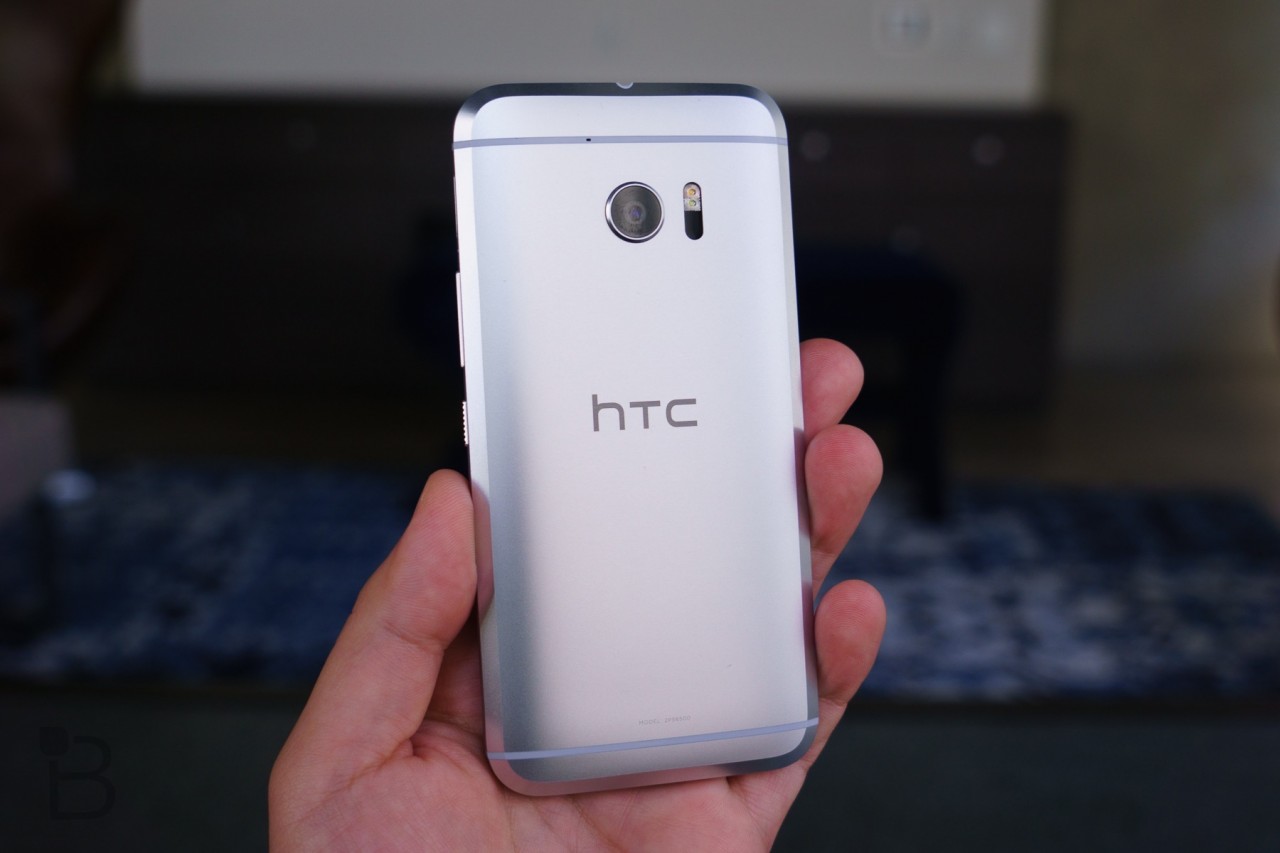After spending years lost in the thick fog of mobile mediocrity, HTC has seemingly engineered its way back to civilization. Announced on Tuesday, the HTC 10 is, for all intents and purposes, the company’s “comeback album,” a pivotal make or break moment in its uphill battle for survival. Having used the device for the better part of three days, I’m forced to ask myself: are the company’s best days ahead? Or does it signal darker days to come?
According to HTC, this device represents a significant shift in the company’s approach to design and engineering, one that aims to bring user experience and functionality to unforeseen levels.
Built on the promising foundations set by the M8 and M9, the 10 is unmistakably an HTC device, featuring an immaculate metal design that’s arguably HTC’s best. HTC devices have always been beautiful, but this? Wow. Thumbs up. Great. The contoured back makes for a comfortable and natural feel and—I know this is a weird thing to point out—makes it easy to scoop up off a table.
I was worried the contoured back wouldn’t look good in person, but those fears faded once I saw it—those leaked shots didn’t do it justice. Not only does the device look terrific, it feels great in the hand; not slippery or big, and not too small either. An excellent benefit to the chamfered back is that it gives the device a slimmer profile, too, or at least the appearance of being slimmer. The protruding camera might be the only minor blemish of an otherwise beautiful design.
Speaking of which, the HTC 10 comes equipped with a 12-megapixel sensor with f/1.8 aperture and optical image stabilization that the company says features improved UltraPixel technology. Compared to last year’s One M9, the HTC 10’s camera sucks in 135 percent more light, translating to better performance in poor lighting conditions. I haven’t yet had the opportunity to analyze camera quality, nor have I used the redesigned camera app, so I’ll let you know more in the final review.
HTC made sure to point out the HTC 10 received a DxOMark score of 88, which matches the same score received by the Galaxy S7. We all know how beloved Samsung’s camera is, so we’re keen to put it to the test during our review.
The front of the device features a beautiful 5.2-inch Quad HD Super LCD display, with a very slight curve at the edges, making for a nice transition to the metal body. It’s similar in the way that Apple’s iPhone 6s screen has a subtle curve, which means swipes toward the edges don’t feel quite as unnatural. Above the display, there’s a 5-megapixel front-facing camera with OIS and a single front-facing BoomSound Hi-Fi speaker.
There’s another BoomSound Hi-Fi speaker that faces down—the tweeter faces users while the bass shoots downward. HTC says the combo provides a richer mono sound (not stereo) though the headphone experience might be the HTC 10’s claim to fame. With Hi-Res audio certification, 24-bit sound processing, built-in DAC, and a headset amplifier, the device is destined to be an audiophile’s dream.
Toward the bottom of the device rests a fingerprint sensor that HTC says is capable of recognizing “partial prints,” which sounds like something someone on a crime scene would say. Supposedly, the sensor can unlock the device in just 0.2 seconds and even get better over time as the software “learns” to recognize your fingerprints.
Beneath the surface the handset sports Android 6 with HTC Sense, a Snapdragon 820 processor, 4GB of RAM, 32GB or 64GB of adoptable storage up to 2TB with a microSD card, and a 3000mAh battery, which HTC claims will get users up to two days of normal use. There’s no wireless charging, but it does support Quick Charge 3.0, which means users can get up to 50 percent in just 30 minutes.
On the software side, the device promises a “leaner” experience, no longer offering unnecessary duplicate apps and bloatware. For example, instead of HTC Internet, Fun Fit, Scribble, and Polaris Office, it relies on Google’s alternatives. On the flip side, HTC offers its apps for Dialer, Messages, Weather, believing its services are superior.
Whichever apps you use, the device sports a neat feature known as Boost+, which HTC says will optimize the experience and improve overall battery life. There’s also an App Lock function that will allow users to lock any app for an added layer of personal security.
The last piece of new software is called Freestyle Layout, which takes the Android out of Android. Instead of a grid dictating your device’s layout, Freestyle will enable users to drag icons, stickers, and widgets anywhere they want. It’s a little cartoony for my taste, but I’m excited to see what kind of possibilities Freestyle holds.
The HTC 10 has some big expectations to live up to, but we’re encouraged by the experience thus far. According to HTC, this device is the “perfect 10,” a phone that’s born from the company’s obsession with design and engineering.
So is it any good?
We’ll answer that question soon but it’s clear HTC is going all out, taking a more refined, intelligent, and restrained approach. The company stepped in where it felt its input was needed (sound and camera) and recognized areas where resources weren’t needed.
You’ll be able to pick the device up soon in carbon grey, glacier silver, and topaz gold… just not on AT&T.















